This article is the result of reader comments following my past article, “12 Major Battles of the Vietnam War.” https://cherrieswriter.wordpress.com/2017/01/03/12-major-battles-of-the-vietnam-war/
There were many comments split between my Vietnam Facebook groups and following the posted article that challenged the word “Major” insisting that anytime participants were fired upon and placed in harms’ way, then in their minds, it wasn’t just a skirmish, ambush or sniper – to them, it was a major experience. Personally, I never knew the names of any of the Operations or battles that I had participated in. All I know is when the shooting started, it was a battle; doesn’t matter if it lasted five minutes or sporadically for a month.
I’ve listed those battles mentioned from your comments along with notes and pictures about each one. Due to its size, (31,000 words and 136 pages) – the equivalent of a short novel, I split the article into 3 parts so the page loads faster. I’ve added as much detail as possible to see the “big picture” and hope it meets with your approval. I also hope that readers find this article educational and learn more about the Vietnam War from the information provided. Kudos to anyone able to read the entire article in one setting!
Note that these engagements are neither listed chronologically nor are they in order of importance. They are only suggestions deemed important to mention from my readers. They are also posted in the order that I recorded them from your notes:
Part I
Operation Prairie I-IV
Battle of Con Tien
Battle of Dong Ha
Operation Allen Brook
Operation Hump
Battle of An Loc
Operation Lam Son 719
Part II
Battle of Quang Tri Province
Battle of Ben Het Special Forces Camp
Battle of Binh Ghia
The Hill Fights
Battle of Trang Bang
Battle of Tam Quang
Part III
Operation Cedar Falls
Operation Dewey Canyon
The Cambodian Campaign
Attack on FSB Jay
Attack on FSB Illingworth
Battle of Ap Gu
Battle of Quang Tri Province
The Battle for Quang Tri occurred in and around Quang Tri City (Quang Tri Province), the northernmost provincial capital of Republic of South Vietnam during the Tet Offensive when the Vietcong and People’s Army of Vietnam (PAVN) attacked Army of the Republic of Vietnam (ARVN) and American forces across major cities and towns in South Vietnam in an attempt to force the Saigon government to collapse. This included several attacks across northern I Corps, most importantly at Hue, Da Nang and Quang Tri City. After being put on the defensive in the city of Quang Tri, the anti-communist forces regrouped and forced the communists out of the town after a day of fighting.
In 1968, Quang Tri City was a small market town and the capital of Quang Tri Province, the northernmost province of South Vietnam, bordering North Vietnam to the north, and Laos to the west. Like the old imperial capital at Hue, Quang Tri City is located on Route 1. It is about 10 kilometers (6.2 mi) inland from the South China Sea along the eastern bank of the Thach Han River, 25 kilometers (16 mi) south of the former Demilitarized Zone. Because Quang Tri City was an important symbol of South Vietnamese government authority and was arguably the most vulnerable provincial capital in South Vietnam, it was a prime target of the North Vietnamese during the 1968 Tet Offensive. The North Vietnamese had attacked and briefly overrun and occupied the city ten months earlier, on April 6, 1967, in a large scale coordinated attack by a reinforced PAVN regiment, inflicting significant casualties on Allied Forces before the attack was defeated. They freed 220 Communist prisoners from a city prison, and caused widespread destruction at ARVN facilities in and around the city and in adjacent districts. The permanent loss of the city to the Communists would be a political embarrassment and weaken the government’s legitimacy, and would allow the establishment of a Communist administrative center in the South. The question was not whether the Communists would attack Quang Tri City again, but when.
Particularly given their failure to hold Quang Tri City after overrunning and briefly occupying it in April 1967 despite committing a large force of about 2,500 men, the Communists became more aware of the difficulties of attacking and capturing the city. In the weeks before Tet, they had attempted to lure allied forces from the coastal lowlands to the mountains by threatening several of the Marine combat bases along Highway 9 in the western part of the province. But while the U.S. Marines had shifted some forces to their base at Khe Sanh, MACV commanders had reinforced eastern Quang Tri Province in late January with the 1st Brigade of the 1st Cavalry Division. The existence of major American units near Quang Tri City came as a shock to the enemy, but with little time to make adjustments, the Communists decided to move forward with their original plan.
 ARVN 1st Regiment airfield and compound at La Vang Thuong, fall 1967, looking south
ARVN 1st Regiment airfield and compound at La Vang Thuong, fall 1967, looking south
`
The brunt of the attack would fall on the ARVN forces in and around the city. These were the 1st Vietnamese Regiment, the 9th Airborne Battalion, an Armored Personnel Carrier (APC) Troop attached to the 1st Regiment (2nd Troop of the ARVN 7th Cavalry), the National Police—a paramilitary body led by regular military officers stationed within the city—and Regional and Popular Force (militia) elements in the city. The 1st Regiment had two of its battalions in positions to the north of the city, and one to the northeast, protecting pacified villages in those areas. The Regiment’s fourth battalion was in positions south of the city in and around the regiment’s headquarters at La Vang. One Airborne company was bivouacked in Tri Buu village on the northern edge of the city with elements in the Citadel, and two Airborne companies were positioned just south of the city in the area of a large cemetery where Highway 1 crosses Route 555.
The 1st Brigade of the 1st US Cavalry Division commanded by Colonel Donald V. Rattan had been moved from near Hue and Phu Bai six days earlier to Quang Tri Province, with its headquarters at Landing Zone Betty two kilometers south of Quang Tri City, with the bulk of its force at LZ Sharon, another kilometer south, in order to launch attacks on Communist Base Area 101 roughly 15 kilometers (9.3 mi) to the west-southwest. The brigade had an additional mission to block approaches into the city from the southwest but was primarily focused on its offensive mission. Accordingly, had quickly established two fire bases, one 15 kilometers (9.3 mi) west of the city and another in the middle of the Communist base areas in the hills west of Quang Tri City. The 2nd Brigade of the 101st Airborne Division was also moved into Quang Tri Province in late January, reinforcing the two brigades of the 1st Cavalry in the area.
The coordinated Communist assault was scheduled to begin at 0200 on 31 January. The 10th Sapper began its attacks on time, but the arrival and attacks of the PAVN infantry and artillery units were delayed by at least two hours by heavy rains and swollen streams and their lack of familiarity with the geography of Quang Tri Province, and they did not start to move into position until about 0400. As a result, Regional and Popular Forces, local National Police elements, and elements of the 1st ARVN Regiment located within the city were able to respond to the sappers without having to contend with the main attack at the same time.
As the 814th Battalion was moving into position to attack Quang Tri from the northeast, it unexpectedly encountered the 9th ARVN Airborne company in Tri Buu village, which engaged it in a sharp firefight lasting about 20 minutes. The Airborne company was nearly annihilated and an American adviser killed, but its stubborn resistance stalled the 814th battalion’s assault on the Citadel and the city. By 0420, the heavy communist pressure and overwhelming numbers forced the surviving South Vietnamese paratroopers to pull back into the city, and the 814th attacked and attempted to enter the Citadel unsuccessfully.
The assault against the eastern and southeastern part the city was initially successful. At about 0420, as the 814th Battalion began its delayed assault on the Citadel, the K4 Battalion of the 812th PAVN Regiment skirted the lower edge of Tri Buu Village and swarmed into the city, attempting to seize strong points and assaulting the Citadel from the south. South Vietnamese irregulars and National Policemen slowed the enemy’s advance, however, and it’s assaults on the southern wall of the Citadel were beaten back. Adding to its difficulties was the failure of an expected “general uprising” it had been told to expect. To the south, the PAVN K6 battalion slammed unexpectedly into the two Airborne companies resulting in an intense, extended firefight.
Shortly after dawn the 1st Infantry Regimental commander ordered his battalions to recapture the city. His three battalions north of Quang Tri City began marching toward the capital. Along the way, they collided with the 808th Battalion blocking Highway 1 near the Trieu Phong District headquarters which temporarily stopped their assault. At about the same time, ARVN troops at La Vang began moving north toward the fighting between the Airborne companies and the K6 Battalion in the cemetery south of the city, and were ambushed by the K6th, slowing their advance to a crawl. Fighting south of the city there was heavy throughout the morning. Only the NVA K5 Battalion, holding a position in Hai Lang District to block reinforcements from Hue, remained unengaged in the fighting.
At the start of the communist attack, the ARVN 1st Regimental headquarters at La Vang and Col. Rattan’s headquarters at Landing Zone Betty south of La Vang came under sporadic rocket and mortar attacks and ground assaults by elements of the 10th Sapper Battalion, while extremely heavy fog hampered visibility. The fog also prevented shifting the 1st Battalion of the 8th US Cavalry Regiment (1st Cavalry Division) its base camp in the mountains west of Quang Tri. The 1st Battalion, 502nd Infantry Regiment, of the 101st Airborne Division, which was under the control of the 1st Cavalry Division, continued its base defense mission and just west of Quang Tri.
This left only the 1st Battalion of the 12th US Cavalry Regiment and the 1st Battalion of the 5th Cavalry Regiment to support the ARVN units engaged with the Communist. Both battalions had opened new fire bases to the west of Quang Tri, along the river valley leading to Khe Sanh. At approximately 1345 on 31 January, Col. Rattan directed the battalions to close out the new fire bases and launch assaults as soon as possible to reduce the Communists’ ability to bring additional forces into the city and also blocking their withdrawal. By 1600, the cavalry battalions had air assaulted into five locations northeast, east, and southeast of Quang Tri City where Brewer intelligence sources had showed Communist units located. The American helicopters received heavy fire as they landed troops east of the city in the middle of the heavy weapons support of the K-4 Battalion, and fighting there continued until 1900 as the Communists fought with machine guns, mortars, and recoilless rifles. Engaged by ARVN forces in and near the city, and by American forces on the east, the K4 Battalion was soon overcome.
Two companies of the 1st Battalion of the 5th Cavalry air-assaulted southeast of Quang Tri engaging the K6 Battalion from the rear in a heavy firefight, while ARVN troops blocked and attacked it from the direction of the city. American helicopter gunships and artillery hit the Communist troops hard causing significant further casualties. By nightfall on the 31st, the battered 812th Regiment decided to withdraw, though clashes continued throughout the night.
Quang Tri City was clear of Communist troops by midday on 1 February, and ARVN units with U.S. air support had cleared Tri Buu Village of PAVN troops. The remnants of the 812th, having been hit hard by ARVN defenders and American air power and ground troops on the outskirts of the city, particularly artillery and helicopters, broke up into small groups, sometimes mingling with crowds of fleeing refugees, and began to exfiltrate the area, trying to avoid further contact with Allied forces. They were pursued by the American forces in a circular formation forced contact with the fleeing Communists over the next ten days. Heavy fighting continued with large well-armed Communist forces south of Quang Tri City, and there were lighter contacts in other areas. This pursuit continued throughout the first ten days of February.
The American military considered the Communist attack on Quang Tri “without a doubt one of the major objectives of the Tet offensive”. They attributed the decisive Communist defeat to the hard-nosed South Vietnamese defense, effective intelligence on Communist movements provided by Robert Brewer, and the air mobile tactics of the 1st Cavalry Division. Between 31 January and 6 February, the allies killed an estimated 914 Communists and captured another 86 in and around Quang Tri City.
The rapid defeat of the regimental-size enemy force that assaulted Quang Tri City proved to be one of the most decisive victories the allies secured during the Tet Offensive. Aside from mopping up operations in the countryside, it was effectively over less than twenty-four hours after it had begun. Most elements of the 812th PAVN Regiment were so badly mauled that they avoided all contact for the next several weeks, when they otherwise might have played a role in the battle for Hue 50 kilometers (31 mi) to the south. Losing the province capital would have been a severe blow to South Vietnamese morale, and PAVN units could have caused extensive damage to nearby ARVN and American bases had they captured long range ARVN artillery pieces in the Citadel. They would also have cut off resupply traffic on Highway 1 to allied forces along the DMZ and the Marines at Khe Sanh. The PAVN’s swift defeat preserved an important symbol of South Vietnamese national pride and allowed the allies to devote more resources to other battles in northern I Corps, particularly to the struggle for Hue.
The Battle of Ben Het Special Forces Camp
Ben Het Camp (also known as Ben Het Special Forces Camp, Ben Het Ranger Camp and FSB Ben Het) is a former U.S. Army and Army of the Republic of Vietnam (ARVN) base northwest of Kon Tum in the Central Highlands of Vietnam. The camp was notable for being the site of a tank battle between the U.S. Army and the People’s Army of Vietnam (PAVN), one of the few such encounters during the Vietnam War.
The 5th Special Forces Group Detachment A-244 first established a base at Ben Het in the early 1960s to monitor communist infiltration along the Ho Chi Minh Trail. The base was located approximately 13 km from the Vietnam-Laos-Cambodia tri-border area, 15 km northwest of Đắk Tô and 53 km northwest of Kon Tum.
On 3 March 1969, Ben Het was attacked by the PAVN 66th Regiment, supported by armored vehicles of the 4th Battalion, 202nd Armored Regiment. One of the attacking PT-76s detonated a land mine, which alerted the camp and lit up the other PT-76s attacking the base. Flares were sent up, exposing adversary tanks, but sighting in on muzzle flashes, one PT-76 scored a direct hit on the turret of an M-48 of the 1st Battalion, 69th Armor Regiment, killing two crewmen and wounding two more. Another M-48, using the same technique, destroyed a PT-76 with their second shot. At daybreak, the battlefield revealed the wreckage of two PT-76s and one BTR-50 armored personnel carrier.
The PAVN 28th and 66th Regiments continued to besiege the base from May to June 1969.
Since January 1972 it had become clear that the North Vietnamese were building up for offensive operations in the tri-border region. ARVN forces had been deployed forward toward the border in order to slow the PAVN advance and allow the application of airpower to deplete North Vietnamese manpower and logistics. To counter the possible threat from the west, two regiments of the 22nd Division were deployed to Tân Cảnh and Đắk Tô and the 1st Squadron, 19th Armored Cavalry Regiment equipped with M41 tanks was deployed to Ben Het. On 24 April, the 2nd PAVN Division, elements of the 203rd Tank Regiment, and several independent regiments of the B-3 Front attacked Tân Cảnh and Đắk Tô rapidly overrunning both bases with their T-54 tanks. On 9 May 1972, elements of the PAVN 203rd Armored Regiment assaulted Ben Het. ARVN Rangers destroyed the first three PT-76 tanks with BGM-71 TOW missiles, thereby breaking up the attack. The Rangers spent the rest of the day stabilizing the perimeter ultimately destroying 11 tanks and killing over 100 PAVN.
My friend, Frank Evans participated in this battle and wrote a book about it (Stand To…A Journey to Manhood) which can be found on Amazon. Here is an excerpt about the battle:
Ben Het was under siege. Each day, a deadly flurry of artillery and mortar rounds destroyed bunkers and damaged equipment. Casualties increased. Small-scale ground attacks tested the defenses of the camp. Friendly patrols near the camp encountered enemy soldiers in groups of five to ten men daily. Frequently, larger enemy units operated near the camp. On a recent mission, a mobile strike force unit reported battling an entrenched battalion-sized force of at least two hundred. Convoys were ambushed regularly. Aircraft received ground fire at every attempt to land. Helicopters, and occasionally a C-130 or C-7A, dared to brave the machinegun and mortar fires on the airstrip to bring in supplies. Our radio communication with the tactical command post in Dak To kept them informed about how defenses were holding up here.
I began to appreciate the comparison that Sergeant Spence made between the French garrison at Dien Bien Phu and Ben Het. Morale was high in spite of the constant barrage of enemy fires. Internal exchanges also relied upon radio, the least secure means of communication since the enemy could easily intercept them with a radio and the right frequency. We had to assume our conversations were being monitored; intermittently, an unknown radio station attempted to obtain friendly information on the location of patrols and their activities. The more secure field telephone landline wire was repeatedly cut by the constant bombardment or by saboteurs.
Sergeant Smith picked up the radio log and asked, “Anything goin’ on this morning, sir?”
“We had one CIDG KIA on the west hill last night. One of the MSF units lost two KIA and two WIA, plus two US WIA. One was pretty badly wounded. They ran into bad guys in bunkers and took heavy automatic weapons fire. They’re still in contact. The enemy has claymore mines, too.”
“Uh huh. Must’ve captured some of our claymores somewhere. I tell you, sir. The enemy’s moving all over the place around here. They’re gettin’ bolder.”
“We have two MSF companies reinforcing us plus the one here in the camp. Another one has been requested from Dak Pek to reinforce the MSF company in contact now. Spooky has been working the hills and trail networks.”
“I heard it. Three Gatling guns. Man, six thousand rounds per minute each! Sorta sounds like hmmmmmmmm…hmmmmmmmm…hmmmmmmmm. Those guns are spewing out red tracers every fifth round, but it looks like a steady stream of red lines from the aircraft to the ground. No wonder Charlie is afraid of the Dragon. Thank you for the excerpt Frank and Thank you for your service!
Here too, is a YouTube video also describing the battle:
The Battle of Binh Ghia
The Battle of Binh Gia (Vietnamese: Trận Bình Giã), which was part of a larger communist campaign, was conducted by the Viet Cong from December 28, 1964, to January 1, 1965, during the Vietnam War in Bình Giã. The battle took place in Phước Tuy Province (now part of Bà Rịa–Vũng Tàu Province), South Vietnam.
The year of 1964 marked a decisive turning point in the Vietnam War. The fragility of the South Vietnamese government was reflected on the battlefield, where its military experienced great setbacks against the Viet Cong. Taking advantage of Saigon’s political instability, Communist leaders in Hanoi began preparing for war. Even though key members of North Vietnam’s Politburo disagreed on the best strategy to reunite their country, they ultimately went ahead to prepare for armed struggle against South Vietnam and their American supporters.
Towards the end of 1964, the Viet Cong commenced a series of large-scale military operations against the Army of the Republic of Vietnam (ARVN), as ordered by the North Vietnamese government. As part of their Winter-Spring Offensive, the Viet Cong unleashed its newly created 9th Division against the South Vietnamese forces at Bình Giã, fighting a large set-piece battle for the first time. Over a period of four days, the Viet Cong 9th Division held its ground and mauled the best units the South Vietnamese army could send against them, only breaking after intense attack by U.S. bombers.
In July 1964, the Viet Cong 271st and 272nd Regiments, began moving into the provinces of Bình Dương, Bình Long and Phước Long to carry out their mission. During the first phase of their campaign, the Viet Cong regiments overran several strategic hamlets at Xan Sang, Cam Xe, Dong Xa, and Thai Khai. Between August and September 1964, Viet Cong regiments executed deep thrusts into Bình Dương and Châu Thành to apply additional pressure on South Vietnamese outposts situated on Route 14. During the second phase of their campaign, the Viet Cong ambushed two South Vietnamese infantry companies and destroyed five armored vehicles, which consisted of M24 Chaffee light tanks and M113 armored personnel carriers. The Viet Cong defeated regular ARVN units at the strategic hamlets of Bình Mỹ and Bình Co.
During the war about 6,000 people lived in Bình Giã, and most of whom were staunchly anti-communist. The inhabitants of Bình Giã were Roman Catholic refugees who had fled from North Vietnam in 1954 during Operation Passage to Freedom because of fears of Communist persecution. To prepare for their main battle, the Viet Cong 272nd Regiment was ordered to block Inter-provincial Road No. 2 and 15, and destroy any South Vietnamese units attempting to reach Bình Giã from the south-western flank of the battlefield. In the days leading up to the battle, the Viet Cong often came out to harass the local militia forces. On December 9, 1964, the 272nd Regiment destroyed an entire South Vietnamese mechanized rifle company along Inter-provincial Road No. 2, destroying 16 M-113 APCs. On December 17, the 272nd Regiment destroyed another six armored vehicles on Inter-provincial Road No. 15.
During the early hours of December 28, 1964, elements of the Viet Cong 271st Regiment and the 445th Company, signaled their main attack on Bình Giã by penetrating the village’s eastern perimeter. There, they clashed with members of the South Vietnamese Popular Force militiamen, which numbered about 65 personnel. The militia fighters proved no match for the Viet Cong and their overwhelming firepower, so they quickly retreated into underground bunkers, and called for help. Once the village was captured, Colonel Ta Minh Kham, the Viet Cong regimental commander, established his command post in the main village church and waited for fresh reinforcements, which came in the form of heavy mortars, machine guns and recoilless rifles. To counter South Vietnamese helicopter assaults, Colonel Kham’s troops set up a network of defensive fortifications around the village, with trenches and bunkers protected by land mines and barbed wire. The local Catholic priest, who was also the village chief, sent a bicycle messenger out to the Bà Rịa district headquarters to ask for a relief force. In response, the Bà Rịa district chief sent out elements of two Vietnamese Rangers battalions to retake Bình Giã. On December 29, two companies of the ARVN 33rd Ranger Battalion and a company from the 30th Ranger Battalion were airlifted into area located west of Bình Giã, by helicopters from the U.S. 118th Aviation Company to face an enemy force of unknown size.
However, as soon as the soldiers from the 30th and 33rd Ranger Battalions arrived at the landing zone, they were quickly overwhelmed by the Viet Cong in a deadly ambush. The entire 30th Ranger Battalion was then committed to join the attack, but they too did not initially succeed in penetrating the strong Viet Cong defensive lines. Several more companies of the Rangers then arrived for an attack from multiple directions. Two companies of the 33rd Ranger Battalion advanced from the northeast. One of them came to the outskirts of the village, but was unable to break through the enemy defenses. The other one, trying to outflank the enemy, had been lured into a kill zone in open terrain and were quickly obliterated in an ambush by the three VC battalions using heavy weapons. The two companies suffered a 70 percent casualty rate, and survivors were forced to retreat to the nearby Catholic church. The 30th Rangers had more success by assaulting from the western direction and succeeded in fighting their way into the village, aided by local residents. It however also suffered heavy losses, with the battalion commander and his American adviser severely wounded. The local civilians in Bình Giã retrieved weapons and ammunition from the dead Rangers, and hid the wounded government soldiers from the Viet Cong. The 38th Ranger Battalion, on the other hand, landed on the battlefield unopposed by the Viet Cong, and they immediately advanced on Bình Giã from the south. Soldiers from the 38th Rangers spent the whole day fighting, but they could not break through their enemies’ defenses to link up with the survivors hiding in the church, and fell back after calling in mortar fire to decimate Viet Cong fighters moving to encircle them.
The morning of December 30, the 4th South Vietnamese Marine Battalion moved out to Biên Hòa Air Base, waiting to be airlifted into the battlefield. The 1/4th Marine Battalion was the first unit to arrive on the outskirts of Bình Giã, but the 1st Company commander decided to secure the landing zone, to wait for the rest of the battalion to arrive instead of moving on to their objective. After the rest of the 4th Marine Battalion had arrived, they marched towards the Catholic church to relieve the besieged Rangers. About one and a half hours later, the 4th Marine Battalion linked up with the 30th, 33rd and 38th Ranger Battalions, as the Viet Cong began withdrawing to the northeast. That afternoon the 4th Marine Battalion recaptured the village, but the Viet Cong was nowhere to be seen, as all their units had withdrawn from the village during the previous night, linking with other Viet Cong elements in the forest to attack the government relief forces. On the evening of December 30, the Viet Cong returned to Bình Giã and attacked from the south-eastern perimeter of the village. The local villagers, who discovered the approaching Viet Cong, immediately sounded the alarm to alert the ARVN soldiers defending the village. The South Vietnamese were able to repel the Viet Cong, with support from U.S. Army helicopter gunships flown out from Vung Tau airbase.
While pursuing the Viet Cong, a helicopter gunship from the U.S. 68th Assault Helicopter Company was shot down and crashed in the Quảng Giao rubber plantation, about four kilometers away from Bình Giã, killing four of its crewmen. On December 31, the U.S. Marines Advisory Group sent a team of four personnel, led by Captain Donald G. Cook, to Bình Giã to observe conditions on the battlefield. At the same time, the 4th Marine Battalion was ordered to locate the crashed helicopter and recover the bodies of the dead American crewmen. Acting against the advice of his American advisor, Major Nguyễn Văn Nho, commander of the 4th Marine Battalion, sent his 2/4th Marine Battalion company out to the Quảng Giao rubber plantation. Unknown to the 4th Marine Battalion, the Viet Cong 271st Regiment had assembled in the plantation. About one hour after they had departed from the village of Bình Giã, the commander of the 2/4th Marine Battalion reported via radio that his troops had found the helicopter wreckage and bodies of four American crewmen. Shortly afterward, the Viet Cong opened fire and the 2/4th Marine Battalion was forced to pull back. In an attempt to save the 2nd Company, the entire 4th Marine Battalion was sent out to confront the Viet Cong. As the lead element of the 4th Marine Battalion closed in on the Quảng Giao plantation, they were hit by accurate Viet Cong artillery fire, which was soon followed by repeated human wave attacks. Having absorbed heavy casualties from the Viet Cong’s ambush, the 2/4th Marine Battalion had to fight their way out of the plantation with their bayonets fixed. During the entire ordeal, the company did not receive artillery support because the plantation was beyond the range of 105mm artillery guns based in Phước Tuy and Bà Rịa. They, however, escaped with the crucial support of the U.S. aircraft and helicopters whose rocket attacks forced the enemy to pull back and halted their attempt at pursuit.
In the morning of December 31, the 4th Marine Battalion returned to the crash site with the entire force and the American graves were located and their corpses were dug up. At about 3 pm, a single U.S. helicopter arrived on the battlefield to evacuate the casualties, but they only picked up the bodies of the four American crewmen, while South Vietnamese casualties were forced to wait for another helicopter to arrive. At 4 pm, Major Nguyễn Văn Nho ordered the 4th Marine Battalion to carry their casualties back to the village, instead of continuing to wait for the helicopters. As the 4th Marine Battalion began their return march, three Viet Cong battalions, with artillery support, suddenly attacked them from three directions. The battalion’s commanding and executive officers were immediately killed and air support was not available. Two Marine companies managed to fight their way out of the ambush and back to Bình Giã, but the third was overrun and almost completely wiped out. The fourth company desperately held out at a hilltop against Viet Cong artillery barrages and large infantry charges, before slipping out through the enemy positions at dawn. The 4th Marine Battalion of 426 men lost a total of 117 soldiers killed, 71 wounded and 13 missing. Among the casualties were 35 officers of the 4th Marine Battalion killed in action, and the four American advisers attached to the unit were also wounded. Backed by U.S. Air Force bombers, on January 1 three battalions of ARVN Airborne reinforcements arrived, they were too late as most of the Viet Cong had already withdrawn from the battlefield.

The battle of Bình Giã reflected the Viet Cong’s growing military strength and influence, especially in the Mekong Delta region. It was the first time the Viet Cong launched a large-scale operation, holding its ground and fighting for four days against government troops equipped with armor, artillery, and helicopters, and aided by U.S. air support and military advisers. The Viet Cong demonstrated that when well-supplied with military supplies from North Vietnam, they had the ability to fight and inflict damage even on the best ARVN units.
The Viet Cong apparently suffered light casualties with only 32 soldiers officially confirmed killed, and they did not leave a single casualty on the battlefield. In recognition of the 271st Regiment’s performance during the Bình Giã campaign, the NLF High Command bestowed the title ‘Bình Giã Regiment’ on the unit to honor their achievement.
Unlike their adversaries, the South Vietnamese military suffered heavily in their attempts to recapture the village of Bình Giã and secure the surrounding areas. The South Vietnamese and their American allies lost the total of about 201 personnel killed in action, 192 wounded and 68 missing. In just four days of fighting, two of South Vietnam’s elite Ranger companies were destroyed and several others suffered heavy losses, while the 4th Marine Battalion was rendered ineffective as a fighting force. At that stage of the war, Bình Giã was the worst defeat experienced by the South Vietnamese. Despite their losses, the South Vietnamese army considered the battle as their victory and erected a monument at the site of the battle to acknowledge the sacrifices of the soldiers who had fallen to retake Bình Giã.
The Hill Fights
The Hill Fights (also known as the First Battle of Khe Sanh) was a battle during the Vietnam War between the People’s Army of Vietnam (PAVN) 325C Division and United States Marines in spring of 1967.
On 20 April operational control of the Khe Sanh area passed to the 3rd Marine Regiment.
On 22 April 1967 SLF Bravo comprising 2nd Battalion 3rd Marines supported by HMM-164 had commenced Operation Beacon Star on the southern part of the Street Without Joy straddling Quảng Trị and Thừa Thiên Provinces against the Vietcong 6th Regiment and 810th and 812th Battalions.
Hill 861
On 24 April 2nd Platoon, Company B, 3rd Battalion 3rd Marines moved to Hill 700 to establish a mortar position to support another Company. 5 Marines then moved to Hill 861 to establish an observation post, but as they entered a bamboo grove near the summit they were ambushed by the PAVN killing 4 Marines.
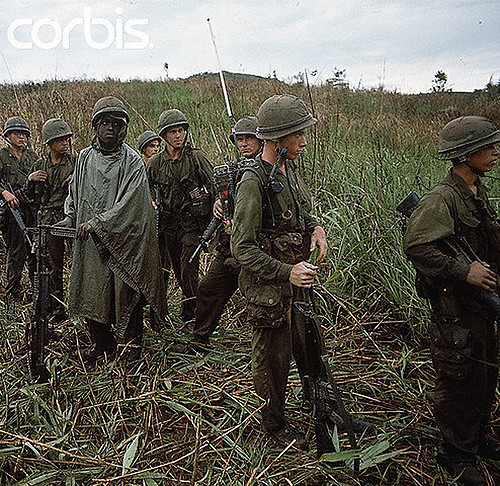
After this contact, a squad was sent to investigate and rescued the lone survivor of the ambush, as they attempted to recover the bodies of the dead they were met with fire and withdrew into the mortar position. Another squad moved to the ambush site and recovered two bodies but as an evacuation helicopter approached the hilltop it was hit by heavy fire, which was suppressed by helicopter gunships.
1st and 3rd Platoons Company B were then ordered to move southeast across Hill 861 to cut off the PAVN but were hit by mortar fire, medevac helicopters were called in, attracting PAVN fire each time. 1st and 3rd Platoons dug in for the night while 2nd Platoon withdrew to Khe Sanh Combat Base (KSCB). Marines losses for the day were 12 dead, 2 missing (later found dead) and 17 wounded.
The next morning Company B continued its slow advance on Hill 861, hampered by fog, difficult terrain and PAVN fire. On the afternoon of 25 April, Company K, 3rd Marines (which was scheduled to relieve Company B at KSCB from 29 April) arrived at KSCB and immediately moved towards Hill 861 to support Company B. 1st and 3rd Platoons Company K moved up Hill 861 on different approaches and 1st Platoon was hit by fire from well-entrenched PAVN 300m from the summit. 2nd Platoon was sent to reinforce 1st Platoon and the fighting continued until nightfall when the Marines dug in. At 18:00 Company K, 9th Marines was flown into KSCB to support the attack.
At 05:00 on 26 April the 3rd Battalion command post and KSCB were hit by mortar and recoilless rifle fire. Company K continued their assault on Hill 861 and was joined by Company K, 9th Marines around midday. The assault made little progress and the Marines withdrew protected by fire from helicopter gunships. Company B was also heavily engaged throughout the morning eventually breaking contact at 12:00 and establishing a defensive perimeter on a knoll, medevac helicopters were called in but as they approached this brought PAVN mortar fire and by 14:45 the Company commander reported that he was unable to move. Artillery was then walked into and around the Company’s position forcing the PAVN to fall back, a Marine platoon was then sent to assist Company B as it fell back to the Battalion command post.
On 27 April 3/3 Marines returned to KSCB for replacements and Battery B 12th Marines arrived at KSCB to support Battery F. Marine artillery and aircraft were used to pound Hill 861 throughout the 27th and 28th, dropping 518,700 pounds of bombs and 1800 artillery round on the hill. Due to the dense foliage and overhead cover protecting many of the bunkers Marine aircraft dropped Snakeye bombs to remove the foliage and expose the bunkers and then larger bombs (up to 2000 lb) to destroy them.
The Marines’ plan was for 2/3 Marines to take Hill 861, then 3/3 Marines would move west securing the ground between Hill 861 and Hill 881 South. 2/3 Marines would then provide flank security for 3/3 Marines and take Hill 881 North.
On the afternoon of 28 April 2/3 Marines moved up Hill 861 with minimal opposition as the PAVN had withdrawn from the Hill. The Marines found 25 bunkers and numerous fighting positions and reported an odor of dead bodies across the hilltop.
Hill 881 South
On 29 April with 2/3 Marines having secured Hill 861, 3/3 Marines advanced from KSCB towards a hill 750m northeast of Hill 881S that was to be used as an intermediate position for the attack on Hill 881S. Company M, 9th Marines engaged a PAVN platoon, while Company M 3rd Marines secured the intermediate position and dug in.
On 30 April 2/3 Marines moved from Hill 861 to support 3/3 Marines and walked into a PAVN bunker complex suffering 9 killed and 43 wounded, the Marines backed off to let artillery and air support hit the bunkers and then overran them. Company M 3rd Marines and Company K 9th Marines began their assault on Hill 881S encountering minimal resistance until 10:25 when they were hit by mortar fire and then heavy fire from numerous PAVN bunkers. The Marines were pinned down and only able to disengage after several hours with gunship and air support, the Marines suffered 43 killed and 109 wounded in the engagement while PAVN losses were 163 killed. Company M 3rd Marines was rendered combat ineffective and was replaced by Company F 2/3 Marines and Company E, 9th Marines was deployed to KSCB on the afternoon of 1 May.
The Marines withdrew from Hill 881S to allow for an intense air bombardment, on 1 May 166 Marine sorties were flown against Hills 881 North and South and over 650,000 lbs of bombs were dropped on them resulting in over 140 PAVN killed.
On 2 May Companies K and M, 9th Marines assaulted Hill 881S capturing it with minimal resistance by 14:20. The Marines discovered over 250 bunkers protected by anywhere between 2 and 8 layers of logs and then 4–5 ft of earth, only 50 bunkers remained intact after the bombing.
Hill 881 North
At 10:15 on 2 May Companies E and G 2/3 Marines assaulted Hill 881N from the south and east. Company G encountered a PAVN position and pulled back to allow for artillery support. Company E almost reached the summit of the hill when it was hit by an intense rainstorm and the Battalion was pulled back into night defensive positions.
At 04:15 on 3 May a PAVN force attacked Company E’s night defensive position, penetrating the east of the position and reoccupying some bunkers. A Marine squad sent to drive out the PAVN was hit by machine gun fire and a scratch squad of engineers was sent to support them while air and artillery strikes were called in on the PAVN. A flareship arrived overhead and the Marines on Hill 881S could see approximately 200 PAVN forming up to attack Company E from the west and fired over 100 rounds of recoilless rifle fire to break up this fresh assault. At dawn, reinforcements were flown in to support Company E while Company H 2/3 Marines attacked the PAVN from the rear. The last bunker was cleared at 15:00, 27 Marines were killed and 84 wounded in the attack, while the PAVN had lost 137 killed and 3 captured. Prisoner interrogations revealed plans for another attack on the Marine positions that night but this did not occur.
At 08:50 on 5 May Companies E and F 2/3 Marines began their assault on Hill 881N, PAVN fire increased as they neared the summit and both Companies pulled back to allow for air and artillery strikes. The assault resumed at 13:00 and by 14:45 the hilltop had been captured.
After securing Hill 881N the Marines thoroughly searched the area around Hills 881N and 881S and air and artillery strikes were called in on suspected PAVN positions, but it appeared that the PAVN had withdrawn north across the DMZ or west into Laos.
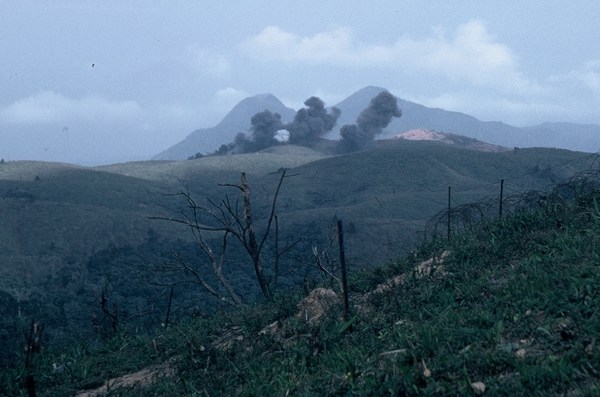 Hill 861 in the forefront and beyond are 881S (left peak) and 881N
Hill 861 in the forefront and beyond are 881S (left peak) and 881N
On 9 May Company F 2/3 Marines encountered a PAVN force 3.2 km northwest of Hill 881N, artillery fire was called in and Company E was deployed in support. The engagement resulted in 24 Marines killed and 19 wounded while PAVN losses were 31 killed, while a further 203 recent graves were discovered in the area.
At midnight on 9/10 May the PAVN attacked Reconnaissance Team Breaker of the 3rd Reconnaissance Battalion, the PAVN could have easily overrun the Marines but instead targeted the Marine helicopters attempting to extract them severely damaging several helicopters. Marine losses were 4 Reconnaissance Team members and 1 helicopter pilot, while PAVN losses were 7 dead.
The Hill Fights officially ended on 10 May. Marine losses were 155 dead and 425 wounded while PAVN losses were 940 confirmed dead. Intelligence gathered after the battle was over found that the PAVN plan was to build up stores and positions north of KSCB, isolate the base from resupply by attacks on Marines bases in northern I Corps, launch a diversionary attack on Lang Vei Special Forces Camp (which occurred as scheduled on 4 May) and then several Regiments of the 325C Division would overrun KSCB, however, the encounter on 24 April had frustrated the PAVN plan.
The Battle of Trang Bang
1ST BDE – A combined arms team of 25th Inf Div armor and infantry killed more than 100 Viet Cong and North Vietnamese forces in a third full day of heavy fighting 54 kms northwest of Saigon. The actions brought to 340 the total number of enemy dead since elements of the 2nd Bde 27 Inf. Wolfhounds of the 25th Division came in contact with an estimated enemy regiment in rice paddies and hedgerows near the district capital of Trang Bang.
The action began as Co B, 2nd Bn, 14th Inf, touched down in open fields east of a small village four kms west of the scene of a 20-hour battle that cost enemy forces 87 dead. Repeating the first fight, the company came under heavy enemy small arms, automatic weapons and rocket fire as it approached the village. Calling for reinforcements, two more companies joined the battle. They also began to return fire with small arms, machine guns and grenade launchers against the entrenched enemy.
Soon after the contact began helicopter gunships, artillery and Air Force fighter bombers were called in to aid the embattled battalion. In addition, a nearby armor task force, led by the 2nd Bn, 34th Armor, with Co C of the 1st Bn (Mech), 5th Inf, sped to the scene of the fight to block off the village to the south. Repeated assaults by the U.S. forces were stopped by the enemy. At nightfall, the infantry-armor task force pulled back while 20 air strikes and 5000 rounds of artillery pounded the area throughout the night.
An early morning assault again halted when the ground units received heavy fire upon approaching the village. After the second series of artillery and air strikes, the U.S. forces encountered only light resistance and swept through the village. According to LTC Alfred M. Bracy, task force commander, an estimated Viet Cong and North Vietnamese battalion had occupied the village. Bracy praised his men for their actions, stating that their morale was high despite the two around-the-clock battles in three days. “There’s a job to do and we will do it,” said Bracy of his unit’s spirit.
SP4 Jimmy J. Mathis of Cochran, Ga., repeated his commander’s comments, “We’ve had so much contact lately, doing the right thing is just becoming natural in a fight.” A few of the men even expressed a certain sympathy for the enemy. “When I get tired and worn out, I think about how much better off we are than Charlie, and I feel better,” said SP4 Daniel R. Mitchell of Santa Maria, Calif., as he watched an air strike fall on the enemy. Captured enemy equipment in the action included 14 AK-47 assault rifles, 2 RPG-2 rocket launchers, 6 Chicom light machine guns and thousands of rounds of small arms ammunition.
This is also the same village made infamous in 1972 when a South Vietnamese Air Force pilot mistakenly dropped napalm on the village. A photo taken shows a young girl who was severely burned and running up the street toward troops (Napalm girl).
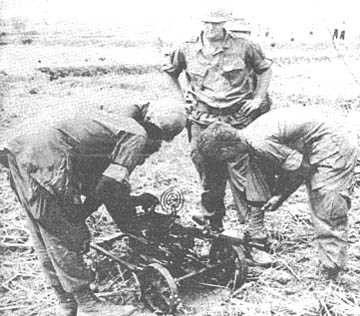
VC MACHINE GUN– A captured Viet Cong heavy anti-aircraft machine gun receives close inspection by members of the 2nd Bn, 34th Armor, 25th Inf Div, who captured it in a battle 54 kms northwest of Saigon. (Photo By SP5 Gary Johnson)
Battle of Tam Quan
The following account is told by Rigo Ordaz who participated in the battle and published this article on History dot com. The Battle of Tam Quan Dec. 6-20 pitted elements of the Ist Cavalry Division’s First Brigade and the First Battalion (Mechanized) 50th Infantry against a tenacious and well-fortified enemy of the 22nd NVA Regiment of the 3rd (Sao Vang-Yellow Star) NVA Division. The battle took place close to the town of Tam Quan in the Central Highland’s coastal northern part of Binh Din Province. The Battle of Tam Quan was the biggest and most successful during Operation Pershing. The victorious U.S. units destroyed at least two battalions of the 22nd NVA Regiment which was setting up for the upcoming 1968 Tet Offensive. It accounted for 1/8 of all enemy killed for the whole year. When the smoke of the battle cleared the 1st Cavalry Division and the 1st Battalion (Mechanized), 50th Infantry emerged victorious and the enemy lost over 650 of their troops against only 58 U.S casualties in a battle which is rated 15th of the 20 deadliest battles of the Vietnam War. Unfortunately, the 1/50(M) Infantry lost 12 Americans on the 10th of December alone.
Aerial reconnaissance forces of the 1st Cavalry Divisions had found many indications of a troop buildup which includes an enormous Russian Ship to Shore radio on the beach. During the month of November and the first part of December 1967 there were many indications that the enemy was building up forces in preparation for the coming Tet Offensive in the Bong Son plains of Binh Din Province. Their major targets would be U.S. and ARVN forces and the major district capitals.
On the 6th day of December a reconnaissance helicopter of the 1/9th , 1st Cavalry Division spotted a radio antenna sticking out of a hooch in the vicinity of the village of Dai Dong . Troop A 1/9th sent a platoon of the Blues (Infantry) to investigate. At 1630 Hours while approaching the area the platoon came under intense automatic and small arms fire and was pinned down. The Weapons Platoon of the 1/9 was sent in to help and they also were pinned down and unable to move. They had stumbled upon a large enemy force of the 22nd NVA Regiment. This was the beginning of the Battle of Tam Quan.
The two platoons were in great danger of being overrun and destroyed. It was late in the afternoon and soon it would be night time. At 1725 the 1st Bde assumed control of the action from the 2nd Bde and directed B Co. 1/8 Cav to the contact area and joined up with a platoon of the A Co. 1/50(Mech) Infantry which had been dispatched from LZ English a few miles away. The combined troops encountered stiff resistance from a well-entrenched enemy. With the firepower of the platoon of APCs they were finally able to extract the two platoons of 1/9th by 2100 Hrs. There is no doubt that had it not been for the firepower of the APCs of A Co. 1/50 (Mech) Infantry, the mission would have been more perilous and at a greater cost of American lives. A 1/50 and B 1/8th Cav established their night perimeter and called in artillery and illumination for the night. They had no further contact that night.
The flamethrower tracks (Zippo) of the 1/50 Mech were especially useful in neutralizing the bunkers and trenches since the 1st Cav Div. had no tanks attached to them at the time. Two D-7 bulldozers from the 19th Engineers were brought in to destroy the bunkers and to clear a pathway for 1/50 APCs. The Engineers had several KIAs from their unit and were credited with killing 10 NVA soldiers. Delta Company 1/50 (Mech) was released from the 2nd Bde and became OPCON to 1/8 Cav, First Bde at 1230 Hrs on 7 December. At 1406 hrs, A,& B 1/8 Cav and Delta Co. 1/50 Mech with flame thrower APCs successfully penetrated the initial bunker and trench network. Delta Company formed all of its APCs in a line facing east with troops of the 1/8 Cav in between the tracks. With all of the company’s 50 Cal. and M60s , M79s and personal weapons going on at the same time, it was beautiful sights and sounds. One of the 1/8 Cav troopers later mentioned that they had never heard so much racket in their life. The enemy probably thought the same thing.
Delta Co. 1/50 Mech and 1/8th Cav had succeeded in penetrating the initial bunker and trench network on the first day U.S. troops counter-attacked. Soon we started seeing some of the enemy coming out of the bunkers some with arms missing, not a sign of pain on their faces. They must have been doped up and some of them still continued firing. Every evening when we pulled to a defensive position for the night we would get replenished with ammunition, food, and hopefully some letters from home.
Although we seemed to have the upper hand in this battle, none of us knew if we were going to make it.
Two companies of the 2/8 Cav were sent northeast to the beach area to serve as a blocking force. They had only sporadic fire during the day. Their CP was momentarily pinned down as they tried to cross a rice paddy. The CP was finally extracted at 1900 Hrs. An ARVN (Army of the Republic of Vietnam) unit conducting screening operations to the north of the contact area was engaged in heavy contact throughout the day with enemy forces trying to escape to the north. The ARVN force conducting screening operation to the south had no contact.
On the morning of December 7, the commander of the 1st Bde, Col. Rattan committed Delta Company, the newest company in the battalion to the battle. Delta Company had just been formed upon arrival of the 1/50(M) Inf. Bn to Vietnam September 22, 1967. It was formed from personnel from HQ Co, Supply, other companies, and new replacements. The battalion had just started operations on October 7, 1967, and within a month it was already in the thick of its first major battle. When the order came we had been operating out of LZ Pony, a Green Beret post in the middle of 506 Valley. For the past month of November, Delta 1/50 2nd platoon had been going out on patrols on foot in the high mountains of the 506 Valley and then we pulled night security for the Special Forces camp at night. Delta Company 1/50 was spread out in the AO. Some of the troops were at Uplift, some troops were with the CO, Cpt Bruce Braun at Uplift and LZ English, 2nd Platoon + was at LZ Pony.
When Lt Welch, second Platoon leader yelled, ” OK everybody, let’s mount up”. I didn’t know what he was talking about because we had been on foot or combat assaults since I got to Vietnam and I didn’t know we had M113 APCs or ACAVS. We all climbed gladly into the APCs but were held up for a while because we were missing two troopers. Eventually, we found them playing cards at the little club the Green Berets had there. Finally, we took off and by 1145 Hrs we were on Hwy One close to the contact area waiting for further orders.
Tank on perimeter at LZ Uplift
Delta mortar platoon had been called to LZ Uplift (Our Bn basecamp) to replenish their mortar loads and joined the rest of the company at the contact site. The 1/8 Cav had air assaulted the rest of their companies and had started their attack in the initial contact area by 0915 Hrs, but were pulled back because they encountered stiff enemy resistance. A barrage of fire from well-prepared enemy positions, and well-camouflaged bunkers and trenches halted their advance. As they pulled back the area was prepped with artillery, CS, ARA, and air strikes which were called in to hit the area.
On December 8, after an early morning artillery TOT hit the enemy positions around the original area of contact. It was followed by an air strike and CS (Tear Gas) to drive the enemy out of the bunkers. The wind shifted and the CS cloud hit us as we were poised to attack. The problem was that there were not enough gas masks to go around. Some of the troops were choking and coughing. Even with the gas mask on, the CS was so concentrated that all our body was stinging with the gas. Most of the ARVNs didn’t have gas masks and were seen running toward a ravine for protection.
At 0845 hrs on Dec. 8, D 1-50 Mech began a reconnaissance in force to the east edge of the village (Dai Dong 2) and we encountered light resistance. We pushed east and north and then we returned to the starting point. C 1-8 Cav had replaced B 1-8 which had been in the initial assault on the 6th Dec. Delta 1-50 Mech. kept on working with A and C 1-8 Cav as we conducted a coordinated attack east and north finding many destroyed bunkers and enemy killed. We swept back through the same area policing the battlefield. Some of the guys in the mortar platoon loaded dead NVA on their APCs trimbane and took them to a designated area. Delta Co. mortars, for the most part, were in an infantry role since a lot of the Red Leg fire missions were being coordinated by Brigade Hqs.
We returned to a night perimeter at 1530. On this day HQ Co. and B 1-50 Mech. became OPCON to the 1st Bde and were sent to LZ English north, a secure area, to prepare for employment. At 1245 hrs the two platoons of Alpha 1-50 Mech were sent to LZ Lowboy and LZ English for rest and to assume their defensive postures. The 1-8 Cav units operating in the beach area to the northeast had only light contact from snipers. The ARVN screening force to the north of the contact area had no contact with the enemy. The southern screening force engaged the 8th Bn, 22nd NVA Regiment, this engagement ended at 1500 Hrs.
On 9 December, D 1-50 Mech along with A and C 1-8 Cav began the final sweep through Dai Dong at 0845 Hrs after artillery and CS strikes. There was little enemy resistance during the sweep and the southern edge of the village was reached by 1530 Hrs. The force returned to the northwestern edge of the village and established that location at 1630 hrs and returned to LZ English for some much-needed rest and security of the LZ. Delta 1-50 Mech had been in combat for three days.
Also on the 9th Dec., at 0700 Hrs. Bravo company 1-50 Mech moved out of LZ English North under the control of Task Force Dolphin (1-50 Mech (-) and headed toward the beach area where it linked up with B 1-8 Cav. C and D 1-12 Cav set up blocking positions in the beach area. The southern screening force, ARVN 40th Rgmt. came under attack by elements of the 8th Bn. 22nd NVA Regiment. At 0520 Hours, the attack was repulsed but they had sporadic to heavy contact continued during the day five clicks north of MY AN (1) village.
On 10 DECEMBER at approximately 0900 hours, the commanding officer of the 40th ARVN Regiment reported that civilians were seen running from the village of Troung Lam. Task Force 1-12 relieved TF DOLPHIN and sent B 1-12 to join up with D 1-12 and B 1-50 Mech. At 0925 Hrs. B 1-50 was directed to turn south and search Troung Lam (1) At 1055 hours while approaching Troung Lam (1) B 1-50 Mech came under intense small arms and automatic weapons fire. This was the first time B 1-50 Mech. had engaged the enemy in the Battle of Tam Quan. B 1-12 maneuvered to the right flank and C 1-12 air assaulted to the left flank at 1220 Hrs. Apparently, B 1-50 Mech company had been split up by a big ditch and part of the company came under intense enemy fire. The other part of the company could not cross the ditch to come to the aid of the beleaguered troops. The company lost 10 soldiers in that encounter. Three coordinated attacks by the three companies were made on the enemy positions during the afternoon. At the time B 1-50 Mech was in contact, Delta Co. 1-50 was still at LZ English having spent the night there. We spent the morning getting ammo, and getting our weapons cleaned. D 1-50 Mech’s rest was cut short as again they were called to the southern screening force area where the 40th ARVN was in heavy contact and were caught in a crossfire from elements of the 8th Bn 22nd NVA Regiment at BS911048. Each time the ARVNS wanted to attack they came under a crossfire. Delta 1-50 Mech. came to the rescue and hooked up with the ARVNS at 1545 hrs on the 10th of December. At 1600Hrs they made a combined attack close to the village of My An(2) The UPI Reports for that day read like this:
SAIGON-(UPI) U.S. ARMOR SPURTING FLAME AND MACHINEGUN FIRE BROKE THROUGH A NORTH VIETNAMESE TRAP AND RESCUED SOUTH VIETNAMESE TROOPS IN THE SIX DAY BATTLE OF BONG SON PLAIN. COMMUNIST LOSSES IN THE CAMPAIGN 300 MILES NORTH OF SAIGON ROSE TO AT LEAST 305 SUNDAY AFTER THE HELL-FOR-LEATHER TYPE DASH BY ARMORED PERSONNEL CARRIERS (APCs) OF THE 1ST. AIR CAVALRY DIVISION SUNDAY IN THE SIX DAY BATTLE OF BONG SON PLAIN.
UPI BONG SON– ON THE COASTAL BONG SON PLAIN, ABOUT 1,000 SURVIVORS OF THE NORTH VIETNAM’S 22ND REGIMENT WERE FRANTICALLY UNLEASHING ALL THEIR FIREPOWER FROM BUNKERS DUG UNDER HUTS OF A RICE PADDY VILLAGE. THE IST CAV SENT A COMPANY OF APC’S TO THE RESCUE SUNDAY WHEN SOUTH VIETNAMESE TROOPS WERE CAUGHT IN A CROSS FIRE.
During that firefight on the 10th of Dec, Lt. Sodowsky (D 1-50) was killed and we had others wounded including some straight legs who were working beside us. It is a possibility that some of the wounded were by friendly fire. Our two medics in Delta Company, Pete Tovar, and Ron Provencher worked frantically tending the wounded right away. In that engagement, Pete Tovar distinguished himself when he went to the aid of the wounded soldiers under a hail of automatic and small arms fire. His heroic actions earned him a Bronze Star with a V device.
While this action was taking place, Bravo 1-50 Mech was about 15 Kilometers away. Each line company had two medics which most of the time had their hands full with their own company during a firefight.
Delta 1-50 remained OPCON to Task Force Dolphin. The commanders of the 40th ARVN and TF Dolphin were in a Command and Control helicopter above the battlefield controlled the combined attack. They kept in constant contact with Delta commander through his RTOs Louis Friesby and Fred Bantle.
15 DECEMBER- One of the last major encounters of the battle was initiated by C 1-12 in an area around My An close to Troung La by the end of the day seven U.S. Companies and 2 ARVN battalions were thrown into the firefight. A request for a Mech unit was granted and A(-) 1/50 was sent in the afternoon. A soldier from the 1st Cav Div was awarded the Medal of Honor in this encounter.
19 DECEMBER- Again an aerial recon by A Troop 1/9 Cav found an antenna wire leading to a large bunker complex. At 1408 D 2-8 Cav air assaulted into the area and was engaged by an unknown size enemy force. A total of six air strikes were called in and by 1700 Hrs bunker complex was completely destroyed.
DECEMBER 20- Four air strikes and intensive artillery were used to neutralize the contact area before a coordinated attack with D 2-8 C and C 1-50 Mech were to move on line and cross the Bong Son river. Swift tidal currents and steep muddy banks on the Bong Son river prevented C 1-50 Mech from crossing to join the attack. D 2-8 Cav completed the attack with no contact. The Battle of Tam Quan ended at 2400Hrs on the 20th of December 1967. The 2-8 Cav remained in the area digging through the demolished bunkers and fortified positions recovering enemy bodies and weapons.
THE FIRST BATTALION (M) 50TH INFANTRY HAD MET ITS FIRST COMBAT TEST IN A MAJOR BATTLE AND HAD COME OUT SUCCESSFUL AND VICTORIOUS. THE BATTLE OF TAM QUAN TURNED OUT TO BE THE 1/50(M) INFANTRY’S BIGGEST ENGAGEMENT DURING ITS STAY IN VIETNAM.
© Rigo Ordaz, 2002-2005. All Rights reserved.
NOTE: There are volumes of books that list every battle / operation of the war. This was not my intent here.
Information used for the series of battles in this article was obtained from The History Channel, Military Channel, YouTube, Tropic Lightning News, Wikipedia, and Vietnam Magazine.
Click below for more articles in this series:
Thank you for taking the time to read this. Should you have a question or comment about this article, then scroll down to the comment section below to leave your response.
If you want to learn more about the Vietnam War and its Warriors, then subscribe to this blog and get notified by email or your feed reader every time a new story, picture, video or changes occur on this website – the button is located at the top right of this page.
I’ve also created a poll to help identify my website audience – before leaving, can you please click HERE and choose the one item best describing you. Thank you in advance!



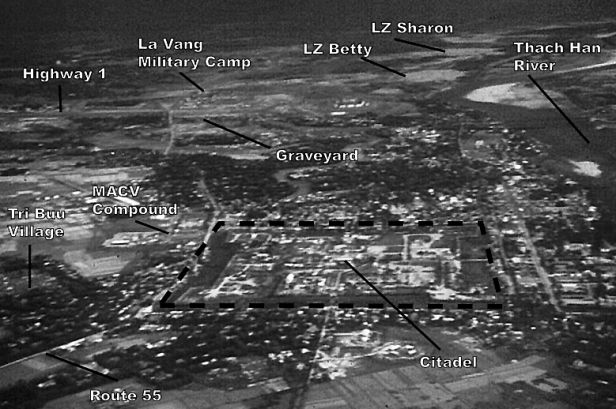




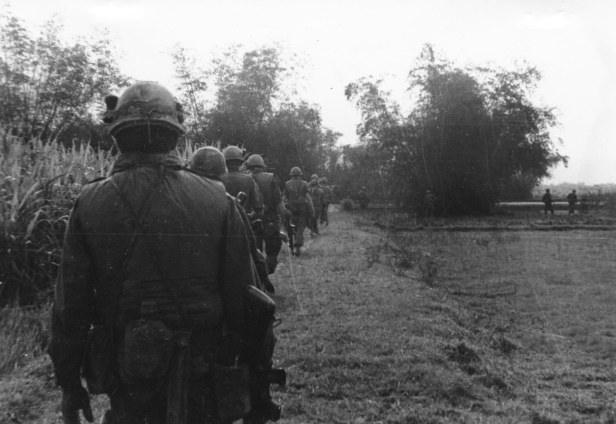
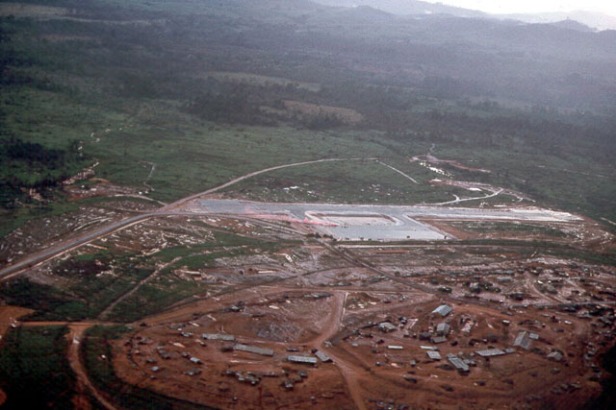


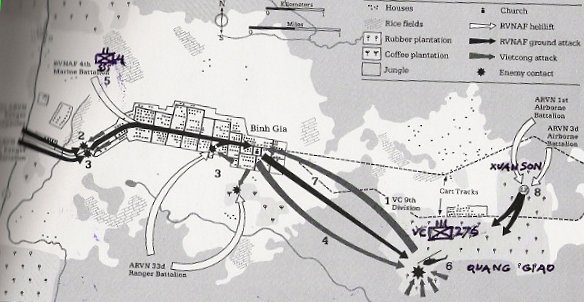

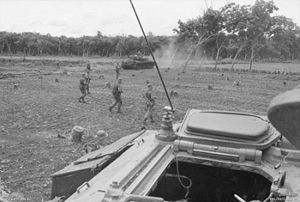
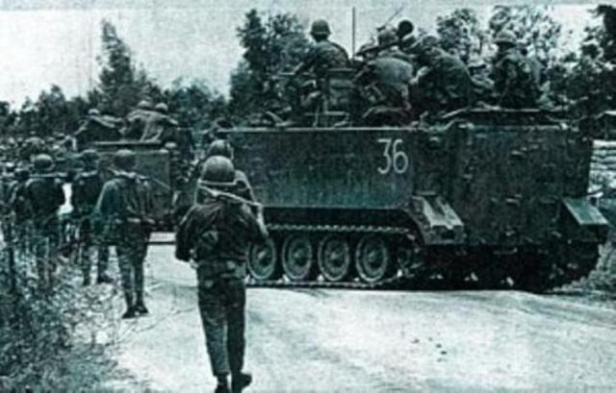

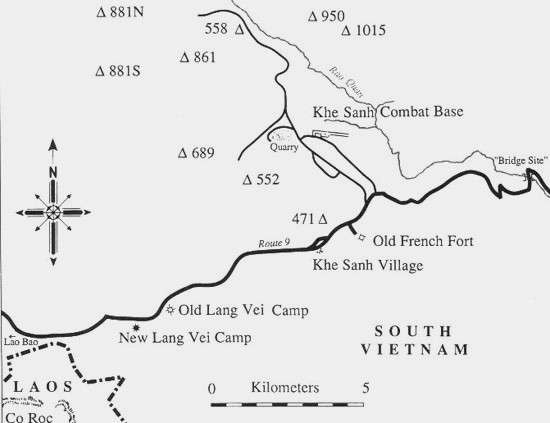

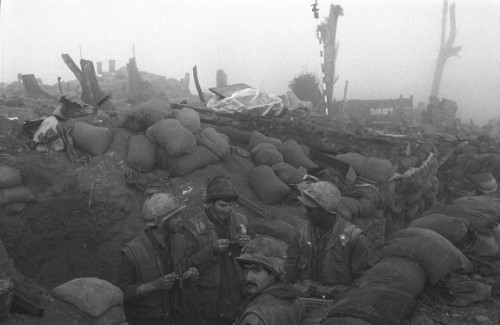

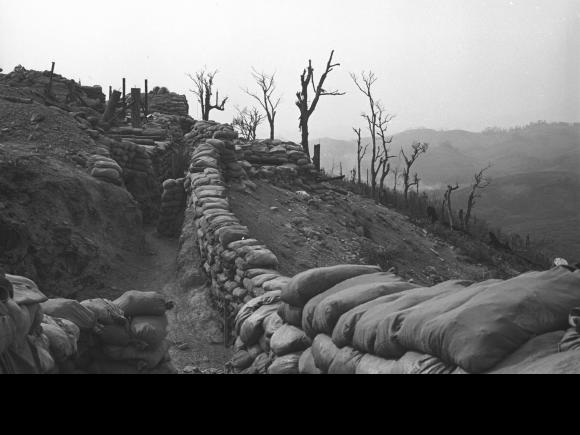
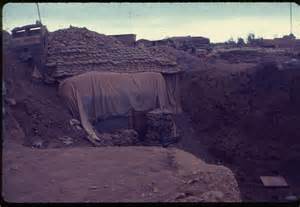



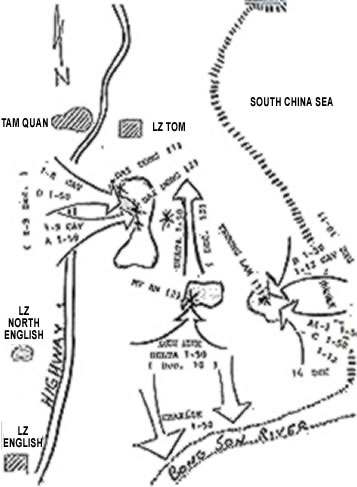
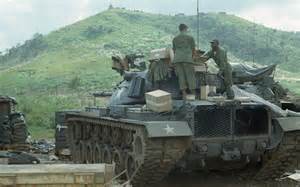
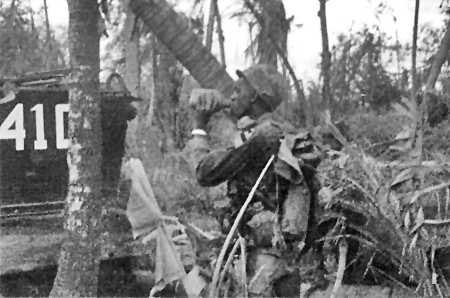

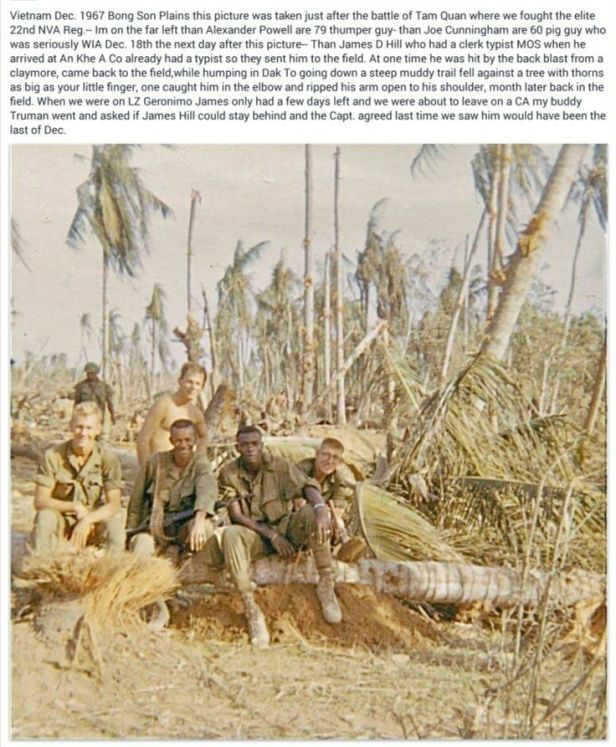

I wish I could get a printed copy of this complete article. I was in Viet Nam and this brought back memeries.
LikeLiked by 1 person
Julian,
Clumped in with the sharing buttons, you’ll find a ‘PRINT’ button which is used to print the article to your printer. Total number of pages is currently at 37. / John
On Fri, Feb 11, 2022 at 11:25 PM CherriesWriter – Vietnam War website wrote:
>
LikeLiked by 2 people
Tam Quan… thank my Dad – Gordon Stone (CO), Mike Bod (pilot), and Al Tyre (FO) for finding and starting that battle. Tyre saw the radio antenna and the rest is history. Reading the exploits and valor of men like A/ 1-9 Cavalry is really inspiring. Thank you for being great role models and true life heroes…. you could and you did.
LikeLike
Outstanding .. Battle of Tam Quan .. My first day in the field B 1/8
LikeLike
please send military engagements part 1 PLEASE (it’s the only one i don’t have)
>
LikeLike
Chris, part I is simply labeled “More military engagements…” and is not titled part 1
LikeLike
Unfortunately when things went wrong for the ARVN, they would lose the will to fight and didi.
LikeLike